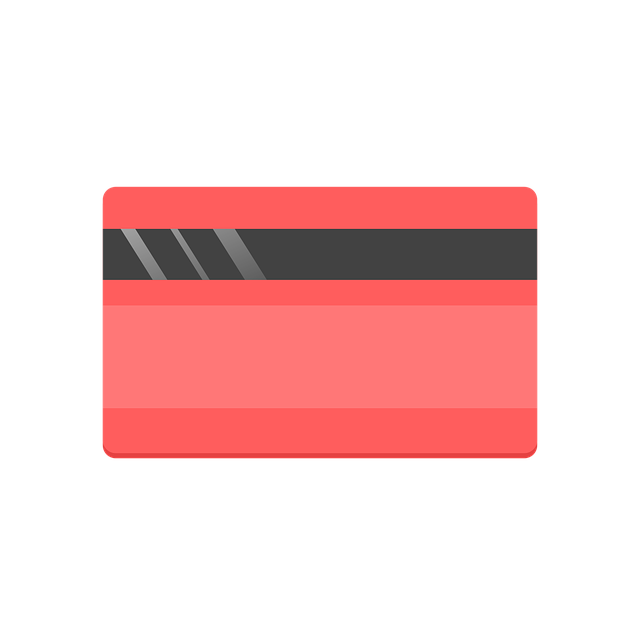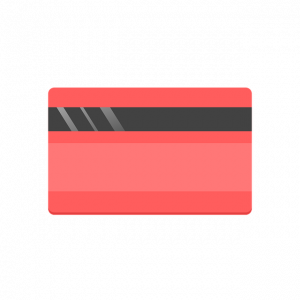
Alternative Financing: What Is Factoring and How Does It Work?
 There are other ways to secure capital for your business besides taking out a loan. While many business owners do, in fact, use loans, alternative financing options offer some unique benefits. Factoring, for instance, is a popular alternative financing option. You can use it to secure capital without taking out a loan or otherwise incurring new debt.
There are other ways to secure capital for your business besides taking out a loan. While many business owners do, in fact, use loans, alternative financing options offer some unique benefits. Factoring, for instance, is a popular alternative financing option. You can use it to secure capital without taking out a loan or otherwise incurring new debt.
What Is Factoring?
Receivables factoring, or what’s more commonly known simply as factoring, is a form of business financing that involves the sale of accounts receivable to a third party. Businesses that have unpaid invoices can sell them to a third party. The third party will purchase a business’s unpaid invoices, after which it seeks to collect payment from the business’s customers or clients.
How Factoring Works
It may sound complex, but factoring is a simple and straightforward financing option. If your business uses invoices — meaning you send customers or clients a bill after their products or services have been delivered — you can sell some of those unpaid invoices to a third party. Third-party companies that purchase unpaid invoices are known as factoring companies.
For a fee, a factoring company will purchase your business’s unpaid invoices. If you have $100,000 in unpaid invoices, a factoring company may offer you $90,000. All factoring companies charge a fee. That’s essentially how they make money. By using their services, though, you won’t have to collect payment. Rather than contacting customers or clients to seek payment, you can sell those unpaid invoices to a factoring company.
Factoring vs Loans
Factoring is a completely different form of financing than loans. Loans are considered debt financing. Some loans are unsecured, meaning they don’t require collateral. Other loans are secured, meaning you can only obtain them with collateral. Regardless, they all involve debt. If you use a loan to finance your business, you’ll incur new debt.
You won’t incur new debt with factoring. Factoring isn’t considered debt financing because it doesn’t involve borrowing money. Instead, it’s a financial transaction between your business and a factoring company. After selling unpaid invoices to the factoring company, you’ll have fresh capital on hand with which to finance your business. You won’t have to pay back the capital. Factoring is a popular alternative to loans, as well as other forms f debt financing, because it doesn’t involve borrowing money.
What are your thoughts on factoring? Let us know in the comments section below!

What Is Credit Utilization Ratio and How Does It Affect Your Business?
 What’s your business’s credit utilization ratio? Even if you know your business’s credit score, you might be unfamiliar with its credit utilization ratio. Nonetheless, if your business uses credit, it has a credit utilization ratio. It’s a credit-based financial metric that provides insight into how much credit your business uses. What is credit utilization ratio exactly, and how does it affect your business?
What’s your business’s credit utilization ratio? Even if you know your business’s credit score, you might be unfamiliar with its credit utilization ratio. Nonetheless, if your business uses credit, it has a credit utilization ratio. It’s a credit-based financial metric that provides insight into how much credit your business uses. What is credit utilization ratio exactly, and how does it affect your business?
Credit Utilization Ratio Explained
Credit utilization ratio represents the amount of credit your business is using relative to your business’s total available credit. It’s expressed as a percentage. A credit utilization ratio of 25% means your business is using one-quarter of its total available credit. If your business has $100,000 in total available credit — credit cards, lines of credit or other revolving credit accounts — and your business is currently using $25,000 on that available credit, its credit utilization ratio will be 25%.
How Credit Utilization Ratio Affects Your Business
Lenders may consider your business’s credit utilization ratio when determining its candidacy for a loan. A high credit utilization ratio can make it difficult to get approved for a business loan. A low credit utilization ratio, on the other hand, can increase your chances of getting approved for a business loan.
If your business’s credit utilization ratio is too high, you may have trouble paying for expenses. A high credit utilization ratio means less available credit to use. You can always use cash or other payment methods to cover the cost of expenses, but you may not be able to use credit.
Ways to Improve Your Business’s Credit Utilization Ratio
You can improve your business’s credit utilization ratio by using less credit. And when you do use credit to pay for goods or services, be sure to pay it off in a timely manner. Credit utilization ratio is based on revolving credit accounts. By paying down those revolving credit accounts, you’ll free up your business’s total available credit, thereby improving your business’s credit utilization ratio.
Another way to improve your business’s credit utilization ratio is to obtain but not use more credit. As your business’s total available credit increases, so will your business’s credit utilization ratio. Just remember not to use all of this credit. Credit utilization ratio represents the amount of credit your business is using relative to its total available credit. You can improve this metric by increasing your business’s total available credit and decreasing your business’s used credit.
Have anything else that you’d like to add? Let us know in the comments section below!

What Is a Line of Credit and How Does It Work?
 When researching alternative financing vehicles for your business, you may come across lines of credit. You can’t expect to grow your business without financing. All businesses require financing in the form of capital. Rather than applying for a loan, though, you may want to consider a line of credit. Both loans and lines of credit are forms of debt-based financing, but the latter vehicle offers a few key advantages. What is a line of credit exactly, and how does it work?
When researching alternative financing vehicles for your business, you may come across lines of credit. You can’t expect to grow your business without financing. All businesses require financing in the form of capital. Rather than applying for a loan, though, you may want to consider a line of credit. Both loans and lines of credit are forms of debt-based financing, but the latter vehicle offers a few key advantages. What is a line of credit exactly, and how does it work?
What Is a Line of Credit?
A line of credit is a financing vehicle that involves the use of a revolving credit account. They are offered by banks and alternative lenders. Whether you need capital to purchase new equipment, hire employees, restock inventory or launch advertising campaigns, you may want to use a line of credit. It will provide your business with a revolving credit account from which you can borrow money.
How Does a Line of Credit Work
A line of credit is similar to a credit card. After getting approved for a line of credit, you’ll be able to borrow money from the revolving credit account. You can continue to borrow money from it as long you stay within the lender’s predetermined limit.
All lines of credit have a limit. Some of the smaller lines of credit offered to small businesses may have a limit of $10,000, whereas larger lines of credit may have a limit of over $1 million. With a line of credit, the lender will provide you with a revolving credit account up to this limit. You can make payments to the lender so that your balance lowers and, thus, frees up more available credit.
Should You Choose a Line of Credit?
You might be wondering whether a line of credit is the right financing vehicle for your business. Many business owners prefer lines of credit over loans because it doesn’t have a fixed limit. Lines of credit still have a limit, but they are revolving. You can continue to borrow money from a line of credit as long as you pay down the balance.
As a form of debt-based financing, you’ll typically need good credit to obtain a line of credit. If you have bad credit — or if you don’t have any credit — you may struggle to get approved for a line of credit.
Have anything else that you’d like to add? Let us know in the comments section below!

How Private Equity Financing Works for Businesses
 Securing capital is essential to the long-term success of businesses. Statistics show that one-third of all small businesses struggle due to a lack of capital. They aren’t able to secure a sufficient amount of capital, so they are unable to execute and expand their operations. Fortunately, there are different forms of financing available for businesses. Rather than applying for a loan, businesses can use private equity financing to secure capital. How does private equity financing work for businesses exactly?
Securing capital is essential to the long-term success of businesses. Statistics show that one-third of all small businesses struggle due to a lack of capital. They aren’t able to secure a sufficient amount of capital, so they are unable to execute and expand their operations. Fortunately, there are different forms of financing available for businesses. Rather than applying for a loan, businesses can use private equity financing to secure capital. How does private equity financing work for businesses exactly?
What Is Private Equity Financing?
Private equity financing is a subset of equity financing. It involves a private equity firm purchasing an equity stake in a private business. Private businesses that need additional capital may look toward a private equity firm for assistance. They can sell an equity stake to the private equity firm, thus securing capital.
How Private Equity Financing Works for Businesses
Businesses are considered public or private depending on whether they trade on the stock market. Public businesses are openly traded on the stock market, meaning anyone can invest in them. Private businesses, conversely, are not traded on the stock market. Ownership can still exchange hands, but private businesses live up to their namesake by being privately traded.
Private equity financing focuses on private businesses. Public businesses can secure capital through stock offerings, but this isn’t an option for private businesses. Instead, private businesses must use an alternative financing vehicle, such as private equity financing. They can sell an equity or ownership stake in their business to a private equity firm.
Advantages of Private Equity Financing
When compared to debt financing, such as loans, private equity financing offers some key advantages. Private businesses can use it to secure capital without incurring debt. Like all forms of equity financing, private equity financing doesn’t involve debt. It only involves the sale of equity. Private businesses can sell an equity stake to a private equity firm.
Many businesses are unable to secure loans due to credit problems. They either have bad credit, or they don’t have any credit. Credit problems such as these will discourage lenders from approving loan applications. But even with bad credit or no credit, private businesses can still secure capital with private equity financing. These are just a few reasons to consider private equity financing if you own a private business.
What are your thoughts on private equity financing? Let us know in the comments section below!
- « Previous
- 1
- 2
